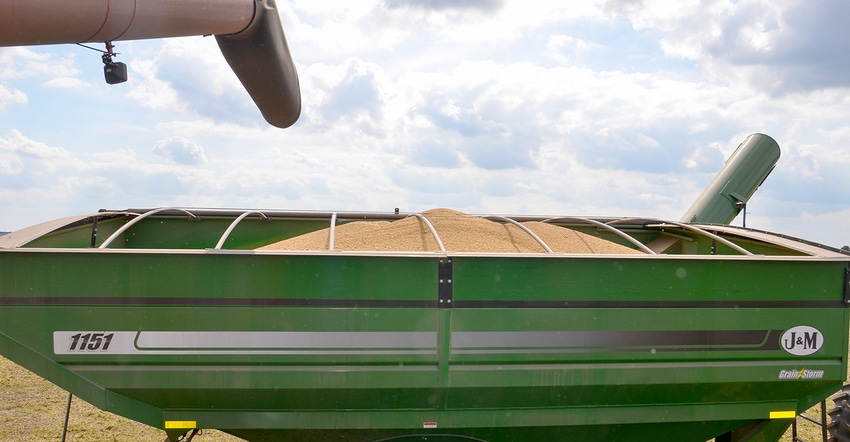
Everybody knows that soybeans are golden yellow, with a blackish mark where the seed attached to the pod. It’s called the hilum. Think of it as the soybean’s belly button. Lila Vodkin says soybeans weren’t always golden yellow with one tiny black mark. Understanding why they are yellow now unlocks the door to future advances in everything from soybeans to humans!
“The yellow color is derived from a natural process known as gene silencing,” says Vodkin, professor emeritus in crop sciences at the University of Illinois. Scientists can use the process to design everything from improved crops to medicine, she says.
The fact that modern soybeans are yellow and not black or brown, like their ancestors were, is important because examples of gene silencing in nature are limited, Vodkin notes. Gene silencing is also known as RNA interference, or RNAi.
“A better understanding of this process can explain how you can manipulate genes in anything from soybeans to humans,” she says.
Natural mutation vs. GMO
Before he did any shopping, a customer visiting an FFA greenhouse plant sale this spring walked up to the instructor with a question. “Are these tomatoes GMO?” he asked. “If they are, I’m leaving. I don’t want any of those GMOs.”
Of course, the tomatoes didn’t contain GMO traits as defined today, so he stayed and bought tomato plants.
Soon afterward, public comments at a city council meeting protested tax incentives to a major company that wanted to invest in a warehouse within city limits. The council withdrew its offer of tax breaks, and the company looked elsewhere.
What were the comments about? You guessed it: GMOs. The company is known for genetic breakthroughs and developing GMO traits. Speaker after speaker didn’t want GMOs in his or her backyard. Yet what would the company have used the warehouse for? It wanted to store seed in bags and containers, and house research equipment headed for various destinations!
Both examples illustrate the public’s growing misconceptions about GMOs, and also the truth that perception can be reality. Yet Lila Vodkin of the University of Illinois recently made an interesting statement. She was discussing how soybeans were originally black and brown. They’re yellow today because of a phenomenon known as gene silencing. The mutation resulting in yellow soybeans occurred naturally thousands of years ago. Within the past century, plant breeders selected for soybeans with the mutation.
“The yellow color in soybeans could have been engineered if it hadn’t occurred naturally,” Vodkin says. “But it would have cost millions, and every yellow soybean would be a genetically modified organism. Nature engineered it first.”
Remote-control farming
The future is closer than you think! Norbert Beaujot, a Canadian farmer and engineer, is the inventor behind the DOT power platform. The U-shaped, diesel-powered, hydraulically driven platform can carry a number of implements designed to fit it.
Here is how it works. Four hydraulic lift arms allow DOT to load the implement onto its structure, making the implement one with the platform. Then it can be controlled in the field autonomously or by remote control. DOT Technology recently demonstrated DOT with a seeder made by a sister company, SeedMaster. There was also a 60-foot-wide sprayer, 500-bushel grain cart and 41-foot crop roller on display at the demonstration — all “DOT Ready.” Learn more at seedotrun.com.
About the Author(s)
You May Also Like




